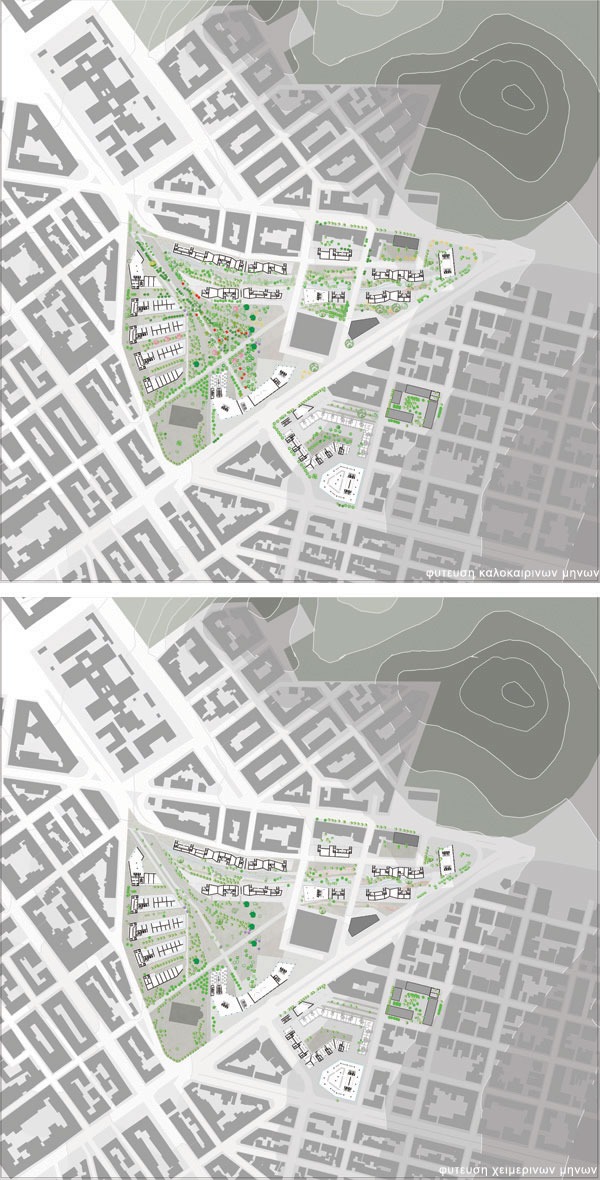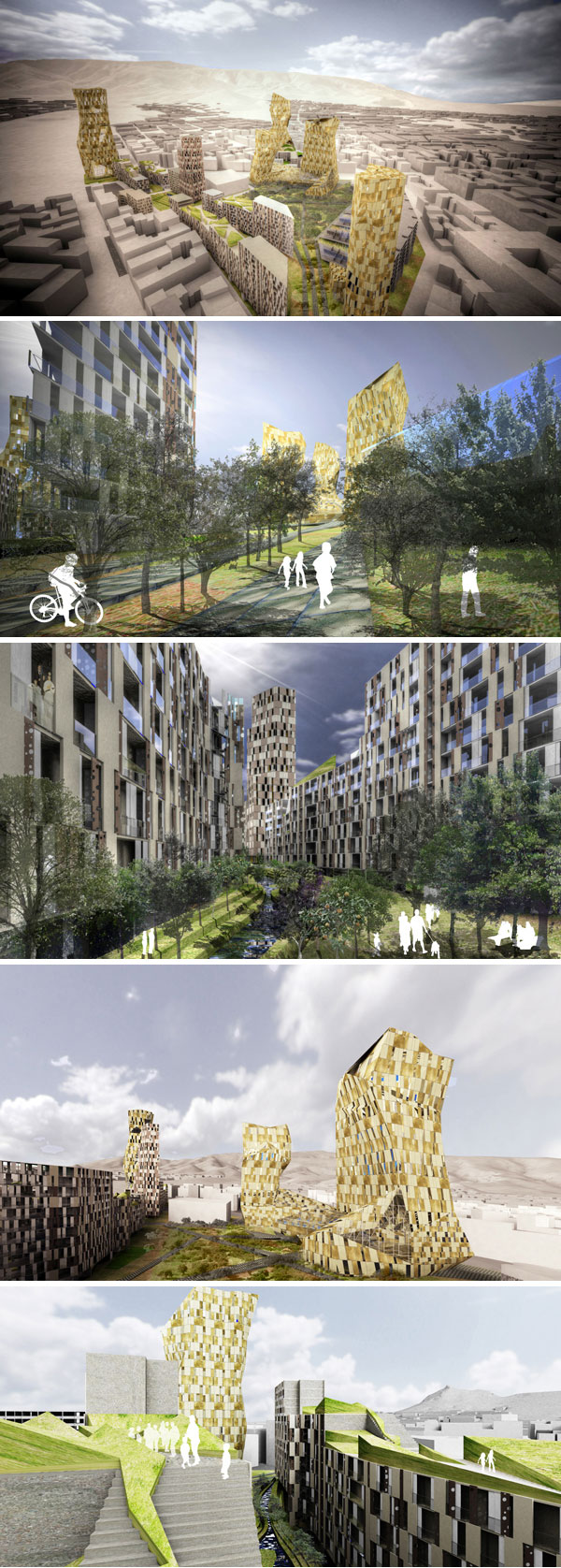STUDENTS PROJECTS
2010
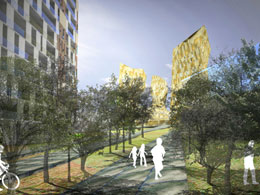
28 February, 2011
Refugee area, Kessariani, Athens
Proposal of a new urban park and residential units.
Student: Felekou Theodora
Supervisor: Panetsos Georgios
Date of presentation: 18/11/2010
University of Patras - School of Architecture
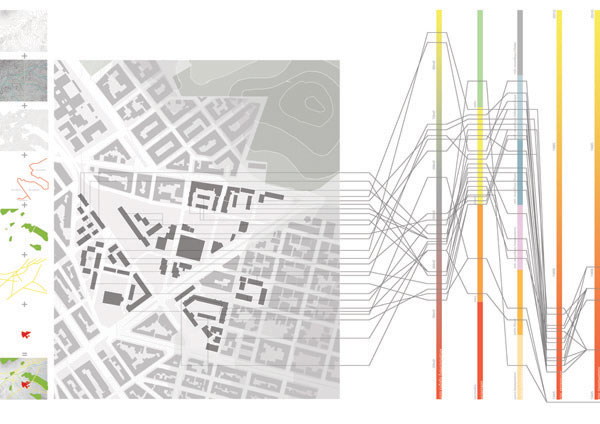
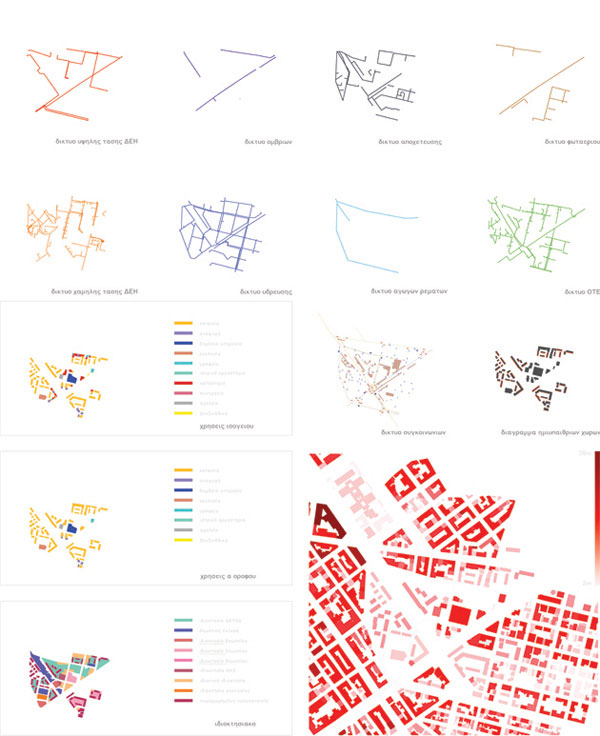
The proposal intends to reconstruct the area of Kessariani, a site of massive history and topography that is nowadays, nothing more than an urban void. The new residential units provide better living conditions whilst the creation of the new park is strongly bound to the new high rise buildings - landmarks of a new urban reality.
Based on initial research is that the condition of the buildings in the study area is moderate to poor. The in-between spaces can be characterized as residual since they demonstrate neither public nor strong private character. Using the maps made by Kaupert the location of the ancient stream, Heridanus, is found. This location was confirmed by photographs of the early 20th century.
The following buildings were deemed worthy of preservation:
- The residential complex of square 9a, known as "purovolimenes". It constitutes living evidence of the recent history of the region. In its current state, it is unfit for habitation. Its renovation is proposed the renovation and its reuse as the folklore museum of Kessariani.
- The buildings of square 12a are preserved in good condition and their arrangement "fits" perfectly in the urban fabric. The square is enriched with a small parking lot so as to provide more parking space in an already crowded area.
The proposal follows two strategic axes.
The first goal is the creation of a park with a strong local character, a potential reference point for the entire city, given the immediate proximity of the region with the centre of Athens. The second goal is the creation of residential units to accommodate residents, providing them with apartments of new typologies that can accommodate thrice the current number of residents. The new buildings also create a strong front for the new urban park.
The general intention in the new housing designs is to create airy spaces, a result that is achieved by the movement around multiple, identical cores. The new types of apartments and their combinations lead to the different forms and shapes of the resulting complexes.
The important dynamic axes that are intensified are the dominant routes of King Alexander Avenue, and the stream. The undisputed flow and mobility of the axes are intensified by the creation of a new axis, perpendicular to the King Alexander Av. The new axis creates a strong union between the east and the west part of the study area, a non-existent factor in the current situation.
The presence of five tall buildings ranging from 25 to 35 floors was evaluated as an important move. The five buildings act as beacons marking the area, giving a clear supra-local character. Their height allows the maximum use of the building factor and the simultaneous increase of the new park area. The new towers are home to offices, places of education media, exhibitions and entertainment.
The process of planting the park follows the change of seasons. Existing plants and their properties were studied. Many trees were transplanted whereas at the same time the flora was enriched with new species, able to withstand the climate of the Mediterranean cities. Both existing and new trees were placed in specific clusters that alter around the year (evergreen - deciduous). In summer, maximum shade is provided and in winter, deciduous trees that are planted under the buildings' shadow dispose of their leaves in order to avoid creating a sense of claustrophobia to the pedestrian.
The ancient stream emerges once more, and the bed is formed with similar strictures and flats to successfully address any spills during rainy seasons. During the year the bed is mostly empty, integrated with the amphitheatre steps on the sides, forming a diverse landscape.
The site also includes a small shopping centre in the eastern part of the study area, smaller commercial premises at ground floor of the residential buildings, a metro station (scheduled to be made), a library and a culture centre of Asia Minor.
The facades of the houses consist of a succession of three types of panels: precast concrete panels 3,00 x1, 20m and 3,00 x0, 60m and cell shading cloths 3,00 x1, 00m. Similar logic was followed in the towers with various forms of precast panels.
